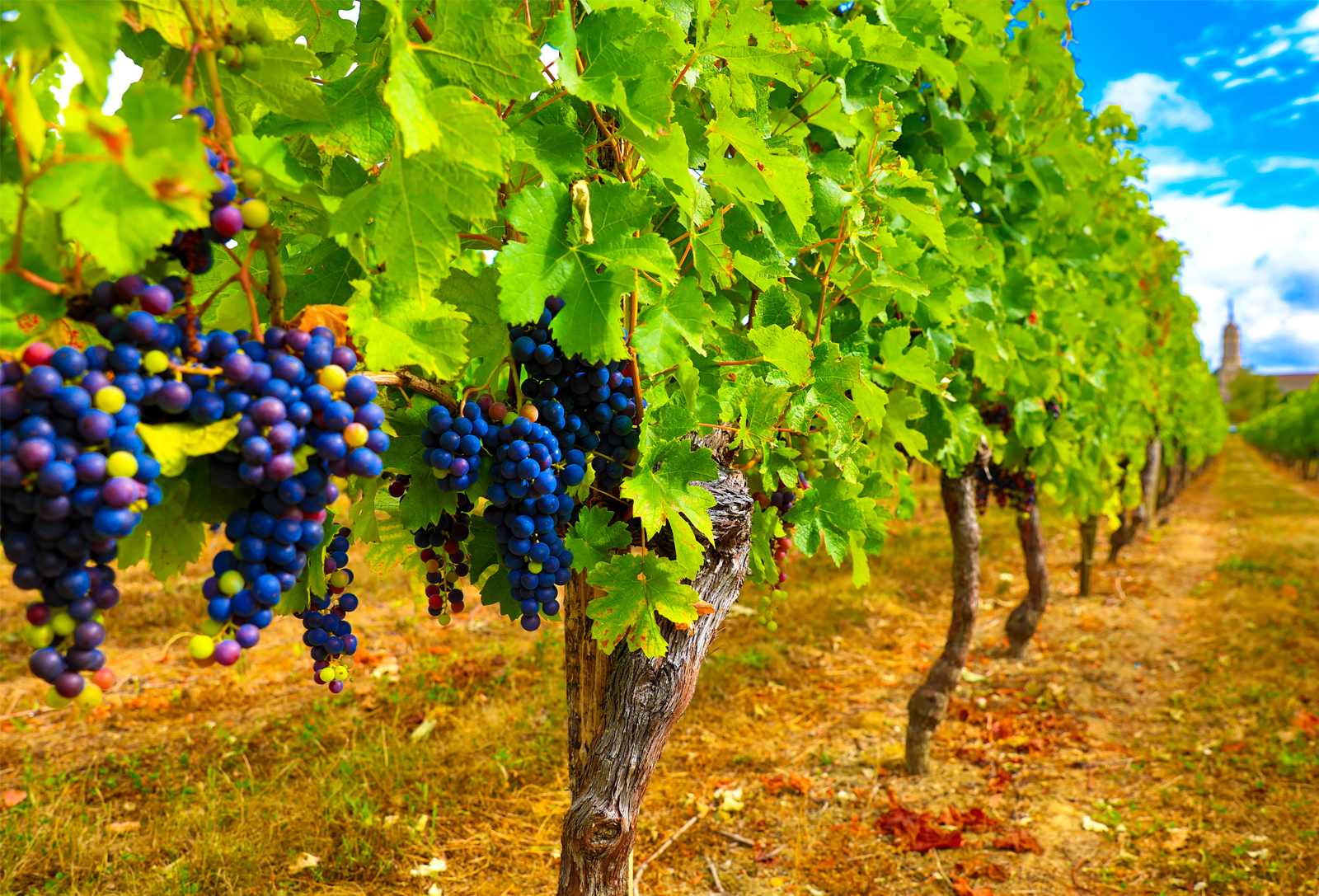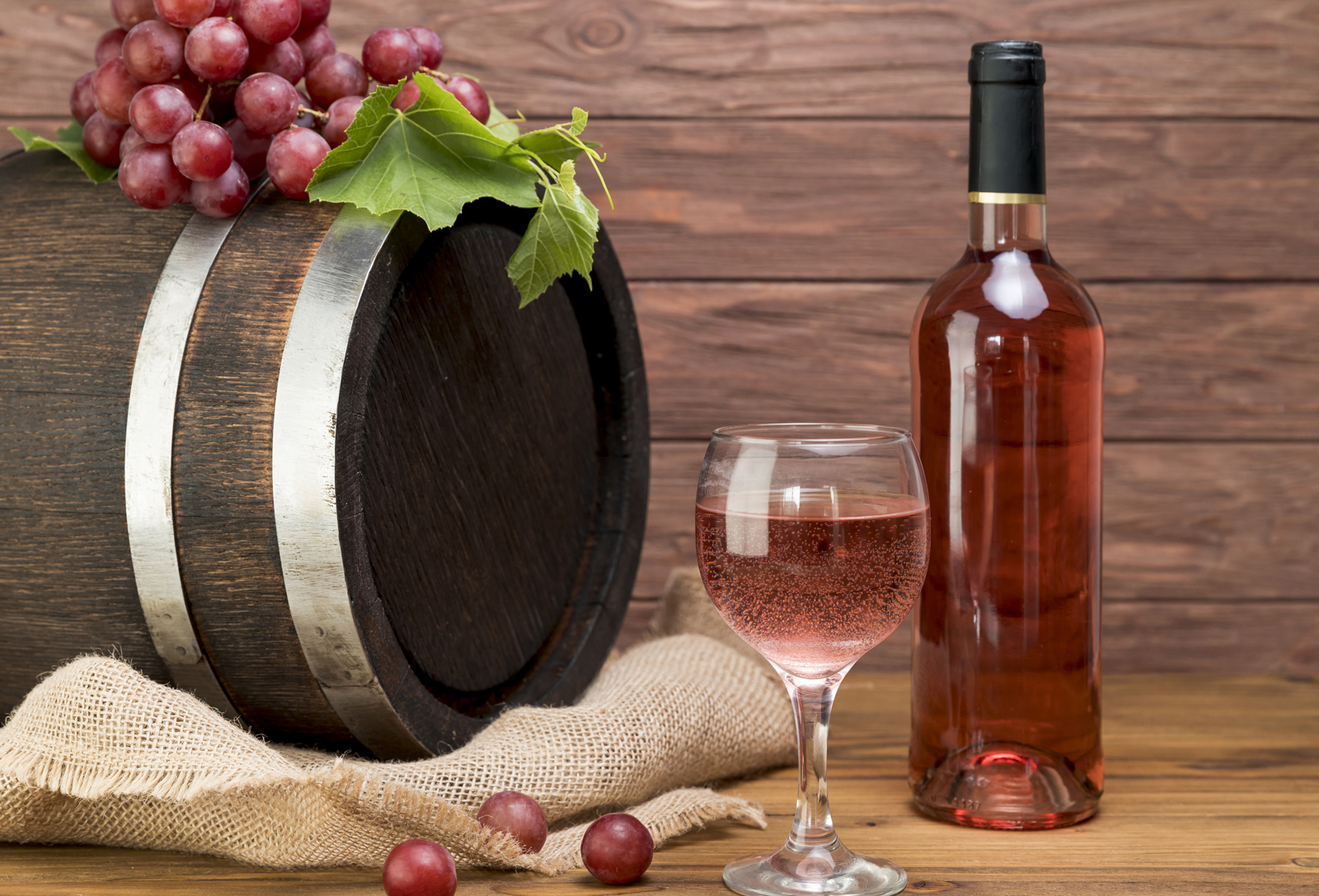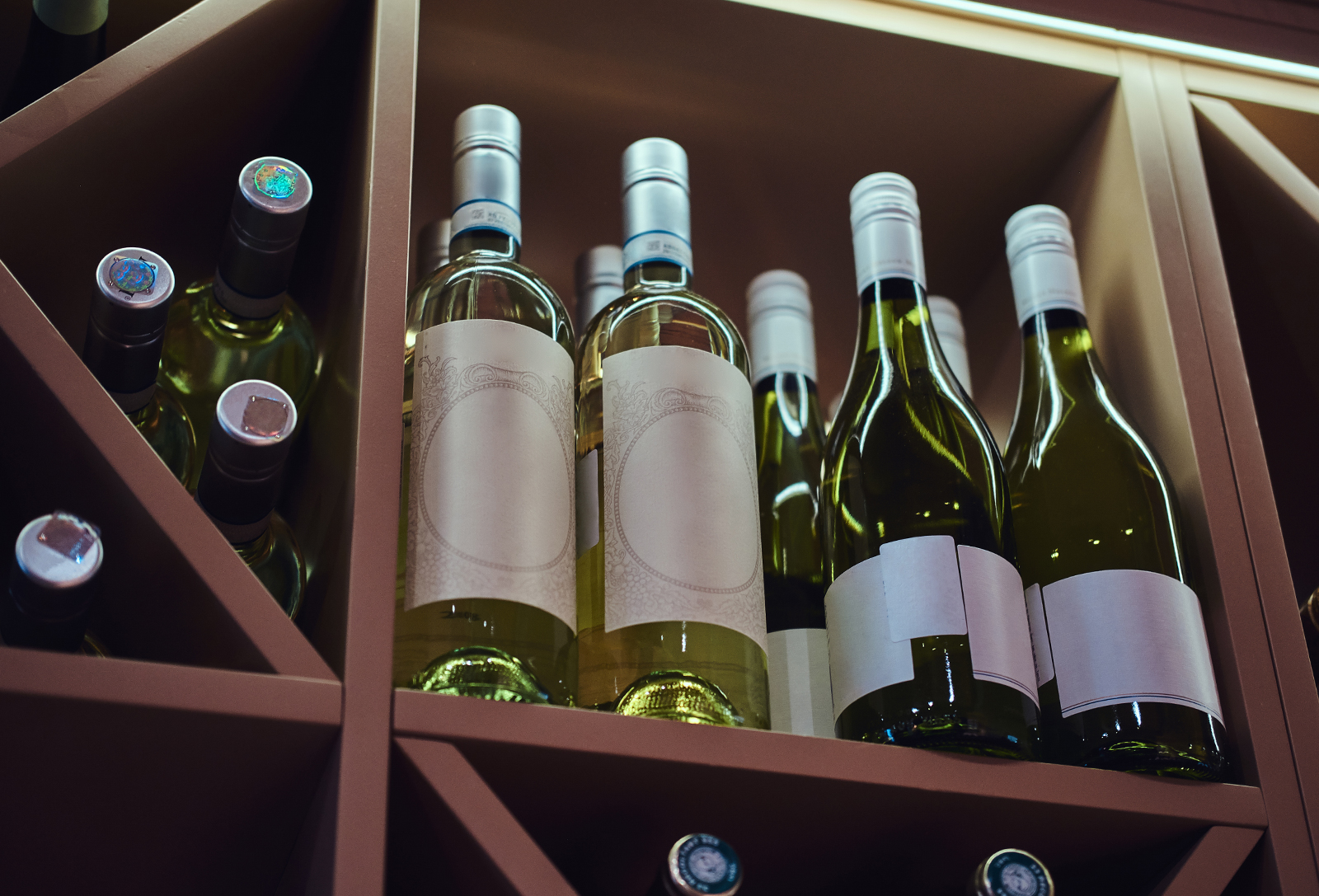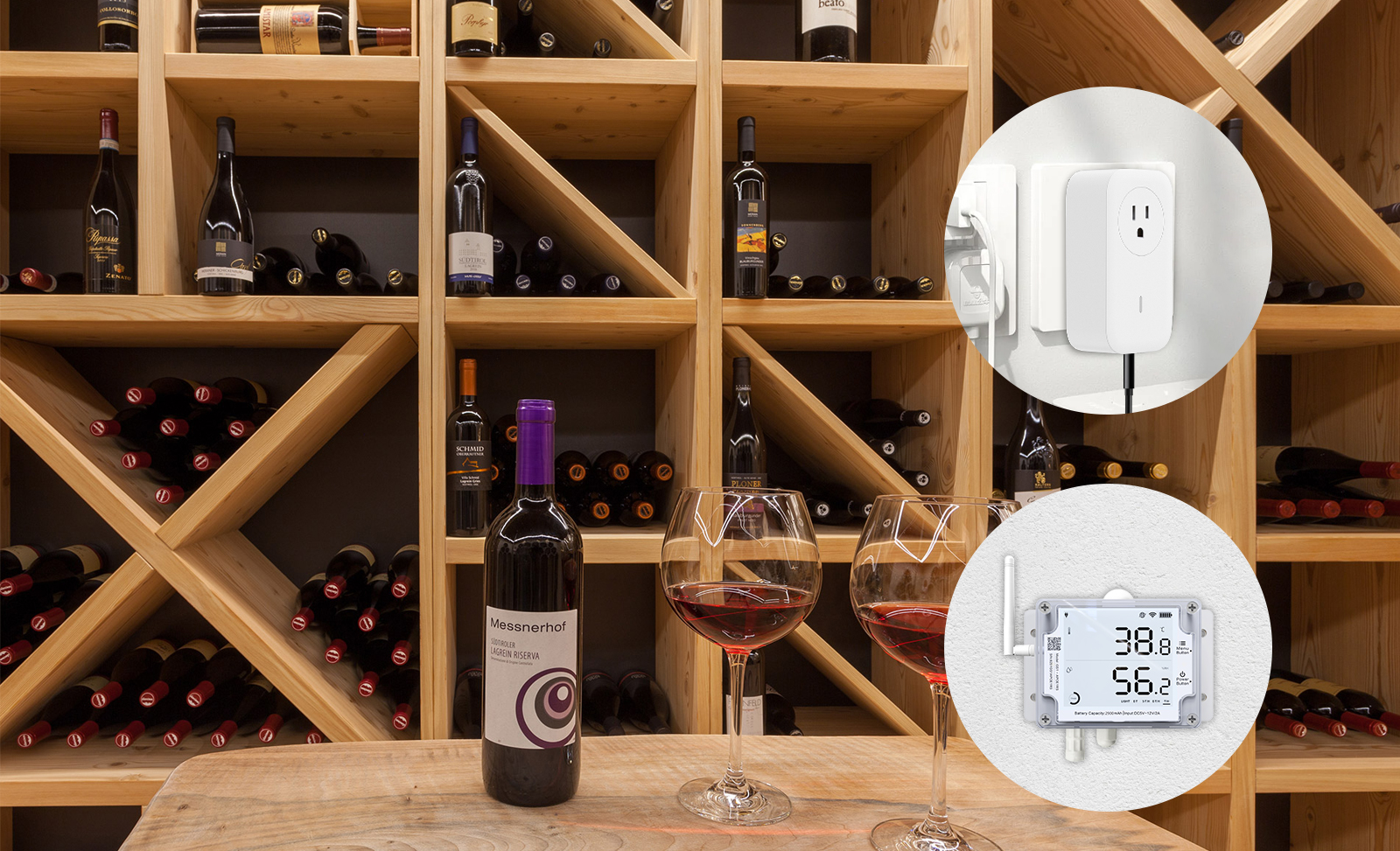
The Importance of Environmental Monitoring of Wine Storage
2022-09-02 07:58:13
Do you want to know how wine is produced and why environmental monitoring for wine storage is important? Keep on reading to learn it all!
The road from grapes to a perfect bottle of high-quality wine is long and not as simple as most people think. The production of wine takes a lot of time, hard work, and effort, and everything can fall down the drain if the wine is not stored properly.
To ensure that the wine is stored properly, it must fulfill many requirements for humidity, temperature, and light. Everything can affect the wine quality, so winemakers need to incorporate environmental monitoring of wine storage to ensure that their products will stay top-quality.

Wine is one of the most popular alcoholic beverages, adored by millions worldwide. While it’s super easy popping your favorite bottle of wine, have you thought about how difficult the wine production process is? To produce high-quality wines, winemakers do several operations. Every process is important and requires knowledge and dedication.
Let’s see how winemakers produce your favorite type of wine, from grape picking to storage.
Grapes are picked at the right moment. Some grapes are picked when they’re slightly ripe for wines with higher acidity. Some grapes are picked when they’re riper to give the wine more sweetness.
The quality of the grapes is measured in pH (acidity), Brix (sugar), and phenolic maturity, which is the ripeness of the skins. It depends on many factors: soil, microclimate, vine orientation, etc.
All the best grapes will be used to produce high-quality wines, and the others will be used for making supermarket value wine brands. When it comes to picking, while mechanical harvesting is more affordable, handpicking the grapes is 100% better because the picker can tell if the grapes are healthy before picking them.

Once the grapes are picked, they’re delivered to the wineries, where they undergo a process called “the crush.” In the production of red wine, the grapes are crushed together with the skin and seeds. The juice, containing skin and seeds, is then placed in a fermentation tank. In white wine production, the grapes get crushed, but the liquid is separated from the skin and seeds before being placed in a fermentation tank.
Fermentation is the process that will turn the grape’s sugars into alcohol. Simply put, it’s the process where the magic happens. The grape juice ferments with the help of yeast. Winemakers have two options for the yeast. One is to use the natural yeast present in the grapes themselves. Although this is the natural way to go, it can be unpredictable. The wild yeast can sometimes cause the wine to have a unique flavor, while other times can destroy the wine. The second option is more predictable and involves cultured yeast designed for winemaking.
The fermentation process takes around two weeks if the winemaker uses cultivated yeast. It can take much longer when natural yeast is used. The experienced winemakers who have been in the winemaking business for ages are mainly focused on using only natural ingredients, and that’s why, although it’s risky, most winemakers choose the wild yeast found in grapes for the fermentation process.
Once the fermentation process is done, the grape juice is placed in aging vessels. To age red wine, winemakers commonly use oak barrels, and for white wines, they use stainless steel barrels or concrete barrels. Aging is an important step in winemaking because that’s when the wine rests and develops its flavor. Light wine wines are rarely placed in oak barrels, and if the winemaker decides to use oak barrels, they use neutral oak and only allow it to age in them for a short time. On the other hand, red wine is aged in new oak barrels and left to age for months and even years. The more time spends in the barrels, the more bold taste the wine will have.

Once the wine is properly aged, winemakers take samples of each aging vessel. The reality is that every wine is a blend. Even if the wine is made from Cabernet Sauvignon grapes, those grapes come from different vineyards and are grown on different soils. Once the proper blending is determined, the right amounts of the blends are placed into a holding tank to mix those blends well before the wine is bottled. The wine is later properly bottled, labeled, and ready to be placed in storage.

Although every step of wine production is important, wine storage is crucial for producing high-quality wine. Everything can go to waste if the wine is not stored in optimal conditions. The main things that must be considered for storing wine are temperature, humidity, and light. If not controlled, these three can have a devastating impact on the win.
First, the temperature plays a huge role, and the ideal temperature is 12-13°C. If the temperature is above 24°C, the wine will start oxidizing. When it comes to humidity, the recommended percentage is 60%-80%. This humidity is ideal because it will keep the cork moist and evaporation to a minimum. More than 80% humidity can cause molds on the label, and less than 60% will dry the cork and cause it to release carbonation. To keep the standards and prevent the wine from going bad, winemakers must constantly monitor their wine storage units.
The UbiBot GS1 is an environmental monitoring data logger that can detect the temperature and humidity of the wine storage unit in real-time. The model has internal temperature, humidity, and ambient light sensors that can detect the environmental data and collect it in its cloud platform.

Additionally, the SP1 can control the ventilation fan inside the wine cellar since ventilation is important. You directly access the SP1 through an app, operate the fan on and off, or remotely set the ventilation control. Another huge plus is that SP1 can be accessed and used on all devices, thus making management convenient.
The Importance of Environmental Monitoring of Wine Storage
The road from grapes to a perfect bottle of high-quality wine is long and not as simple as most people think. The production of wine takes a lot of time, hard work, and effort, and everything can fall down the drain if the wine is not stored properly.
To ensure that the wine is stored properly, it must fulfill many requirements for humidity, temperature, and light. Everything can affect the wine quality, so winemakers need to incorporate environmental monitoring of wine storage to ensure that their products will stay top-quality.

How is Wine Produced?
Wine is one of the most popular alcoholic beverages, adored by millions worldwide. While it’s super easy popping your favorite bottle of wine, have you thought about how difficult the wine production process is? To produce high-quality wines, winemakers do several operations. Every process is important and requires knowledge and dedication.
Let’s see how winemakers produce your favorite type of wine, from grape picking to storage.
Grapes Picking
Grapes are picked at the right moment. Some grapes are picked when they’re slightly ripe for wines with higher acidity. Some grapes are picked when they’re riper to give the wine more sweetness.
The quality of the grapes is measured in pH (acidity), Brix (sugar), and phenolic maturity, which is the ripeness of the skins. It depends on many factors: soil, microclimate, vine orientation, etc.
All the best grapes will be used to produce high-quality wines, and the others will be used for making supermarket value wine brands. When it comes to picking, while mechanical harvesting is more affordable, handpicking the grapes is 100% better because the picker can tell if the grapes are healthy before picking them.

Crush
Once the grapes are picked, they’re delivered to the wineries, where they undergo a process called “the crush.” In the production of red wine, the grapes are crushed together with the skin and seeds. The juice, containing skin and seeds, is then placed in a fermentation tank. In white wine production, the grapes get crushed, but the liquid is separated from the skin and seeds before being placed in a fermentation tank.
Fermentation
Fermentation is the process that will turn the grape’s sugars into alcohol. Simply put, it’s the process where the magic happens. The grape juice ferments with the help of yeast. Winemakers have two options for the yeast. One is to use the natural yeast present in the grapes themselves. Although this is the natural way to go, it can be unpredictable. The wild yeast can sometimes cause the wine to have a unique flavor, while other times can destroy the wine. The second option is more predictable and involves cultured yeast designed for winemaking.
The fermentation process takes around two weeks if the winemaker uses cultivated yeast. It can take much longer when natural yeast is used. The experienced winemakers who have been in the winemaking business for ages are mainly focused on using only natural ingredients, and that’s why, although it’s risky, most winemakers choose the wild yeast found in grapes for the fermentation process.
Aging
Once the fermentation process is done, the grape juice is placed in aging vessels. To age red wine, winemakers commonly use oak barrels, and for white wines, they use stainless steel barrels or concrete barrels. Aging is an important step in winemaking because that’s when the wine rests and develops its flavor. Light wine wines are rarely placed in oak barrels, and if the winemaker decides to use oak barrels, they use neutral oak and only allow it to age in them for a short time. On the other hand, red wine is aged in new oak barrels and left to age for months and even years. The more time spends in the barrels, the more bold taste the wine will have.

Blending
Once the wine is properly aged, winemakers take samples of each aging vessel. The reality is that every wine is a blend. Even if the wine is made from Cabernet Sauvignon grapes, those grapes come from different vineyards and are grown on different soils. Once the proper blending is determined, the right amounts of the blends are placed into a holding tank to mix those blends well before the wine is bottled. The wine is later properly bottled, labeled, and ready to be placed in storage.

Why is Environmental Monitoring Important For Wine Storage?
Although every step of wine production is important, wine storage is crucial for producing high-quality wine. Everything can go to waste if the wine is not stored in optimal conditions. The main things that must be considered for storing wine are temperature, humidity, and light. If not controlled, these three can have a devastating impact on the win.
First, the temperature plays a huge role, and the ideal temperature is 12-13°C. If the temperature is above 24°C, the wine will start oxidizing. When it comes to humidity, the recommended percentage is 60%-80%. This humidity is ideal because it will keep the cork moist and evaporation to a minimum. More than 80% humidity can cause molds on the label, and less than 60% will dry the cork and cause it to release carbonation. To keep the standards and prevent the wine from going bad, winemakers must constantly monitor their wine storage units.
How Can UbiBot Help?
The UbiBot GS1 is an environmental monitoring data logger that can detect the temperature and humidity of the wine storage unit in real-time. The model has internal temperature, humidity, and ambient light sensors that can detect the environmental data and collect it in its cloud platform.

Additionally, the SP1 can control the ventilation fan inside the wine cellar since ventilation is important. You directly access the SP1 through an app, operate the fan on and off, or remotely set the ventilation control. Another huge plus is that SP1 can be accessed and used on all devices, thus making management convenient.